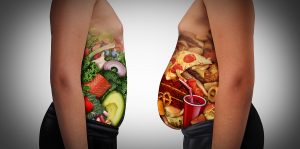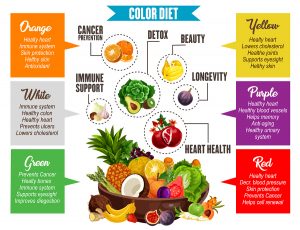In December 2017 I heard Dr. Longo speak at a medical conference in Las Vegas. He suggested the use of the fasting mimicking diet for 5 days every month. I am getting into the age group where a little help from nature would not harm (I am 74 years old). I started immediately in December 2017 to do a fasting mimicking diet (FMD) for 5 days.
Effects of fasting mimicking diet
In the beginning you just notice that you are not as hungry as you thought you would be, because you do take in three mini meals of about 200 calories each, which curbs your appetite. It is also important to consume enough liquids. Please note: liquids! Not liquor! Wine, beer or any alcoholic drinks are not part of the diet. You can drink water, but, this may get boring, and you can take water with lemon, herbal teas, black tea and coffee, as long as you stay away from sugar-laced drinks.
How the FMD works
Your total calorie intake will amount to no more than 600 calories per day for the 5 days where you do the fasting mimicking diet. Your body mass index (BMI) decreases between 0.1 and 0.4 per day to a total of 0.5 to 0.9 for the 5 days. This does not seem much, but if it is accumulating every month, a person who is obese now could have a normal weight within one year. The first day of this fast may present some challenges. I found that in the afternoon I felt hungry. What helped was a hot drink( tea, coffee, clear broth). Day two was better, and from day three it has become a routine. There are no ferocious hunger pangs, no headaches or feelings of weakness or tiredness. I am always surprised that my energy level is improving when I do the fasting mimicking diet for 5 days every month.Dr. Longo suggests not to exercise during the fast. It is obvious that this time is not suitable for half- marathons or taxing hikes, but I found that thirty minutes of aerobics and thirty minutes of weight training felt good. Listen to your body! If you feel lightheaded at any time, stop! The emphasis is on “moderate”.
Dr. Longo noticed the following findings in a mouse model as well as on humans. I summarized this before in a previous blog:
Specific results when on the fasting mimicking diet for 5 days every month
- Obesity diminishes, because of the weight loss effect due to missing calories.
- Diabetes: insulin resistance becomes lower and blood sugar levels drop.
- High blood pressure reduced: many patients were able to reduce their medications or discontinue them
- Pain conditions improve as all kinds of pain disappears, an effect for which there is no explanation at this point
- Autoimmune diseases like MS and rheumatoid arthritis improve, likely because of the effect of increased stem cell circulation
- Prevention of heart attacks and strokes because of reduction of LDL, triglycerides and CRP
- Cancer cure rates improve by protecting normal cells, the bone marrow and stimulating the immune cells
- Longevity improved in mice with a 3-fold increase of their life span. Telomere length in humans was increased. Increased stem cells will find defective areas that need repair. This effect leads to less disease in older age.
Meal samples of fasting mimicking diet
Dr. Longo developed a kit containing all pre-packaged foods for 5 days under the name “ProLon Fasting Mimicking Diet”. The package is not larger than a shoebox, and the diet is plant-based, has some nutrition bars, drinks as well as freeze-dried soups. You can argue about the nutritional value, as it has an average rating of 3.5 out of 5. It also comes in at a hefty price of 300.00 USD. In reality it is a matter of calorie-math to consume very little food. There are plenty of tables available on the Internet that tell you the nutritional value of foods, and it does not take much effort to compose your own menu.
Here is a fairly typical list of foods
Breakfast: A typical breakfast consists of 2 slices of rye crisp bread (Wasa or Ryvita) with a bit of almond butter on it, a cup of coffee and either black or with stevia and milk.
Lunch: 8 oz. of tomato soup and coffee or tea.
Dinner: A tossed salad with organic bell peppers, ½ tomato, and two thin slices of avocado, vinegar and 1 tablespoon of olive oil.
Here is an alternative meal sample:
Breakfast: Eat a nutrition bar that is based on nuts. It should not be more than 250 calories. Alternatively make your own! Have tea or coffee.
Lunch: 8 oz. of homemade vegetable soup without the addition of pasta or beans.
Dinner: Miso soup and 4 rice crackers, alternatively a small tossed salad with olive oil and vinegar.
Results of fasting mimicking diet for 5 days every month
Here are typical results that I found over several months. I am using body composition scales every day to measure my weight, body fat percentage, visceral fat percentage, muscle percentage, calories burnt and the BMI.
One month the BMI went from 21.9 to 21.1 during a 5-day FMD. Another month the BMI experienced a reduction from 21.7 to 21. 2. Here is a list of the some of the 5-day losses of my BMI on a couple of occasions: 0.8, 0.4, 0.9, 0.7, 0.6, 0.5, 0.7 and so on.
It is important that you are not going on an eating binge after those five days. The FMD conditioned your body to be content with very small amounts of food. Enjoy your food, but stick to moderate portions.
Discussion of fasting mimicking diet for 5 days every month
An intermittent fasting mimicking diet was shown to have a diversified positive health effect in both animal models and humans. For instance, inflammatory bowel disease improves on FMD by improving the bowel microbiota and by promoting the intestinal regeneration.
Intermittent fasting, as this article shows, can prevent age-associated diseases.
This article suggests that T-killer cells that attack cancers are promoted by the intermittent fasting mimicking diet.
A FMD in type 1 diabetic patients has been shown to restore insulin generation in islets of the pancreas of these patients. The result was an improvement of their type 1 diabetes.
More research data on fasting mimicking diet
A clinical trial with 100 subjects was undertaken by Dr. Longo and his research team. He measured markers after 3 cycles of a fasting mimicking diet for 5 days every month. They found that the FMD reduced aging markers, improved diabetes and reduced susceptibility for cancer and cardiovascular disease. In another publication Dr. Longo and co-authors describe how autoimmune diseases can be improved by the use the fasting mimicking diet for 5 days every month.
Another publication by Dr. Longo describes that “age-related disorders including diabetes, cardiovascular disease, cancers and neurological disorders such as Alzheimer’s disease, Parkinson’s disease and stroke” can be prevented by fasting mimicking diet for 5 days every month.
Even cancer prevention and cancer treatment can be helped by the fasting mimicking diet. The FMD makes chemotherapy more tolerable.
Conclusion
I have shown that with the fasting mimicking diet (FMD) done for 5 days in every month you can lower your body mass index (BMI) by 0.4 to 0.9 units. On the long-term this helps you to keep your BMI stable and in the 21.0 to 22.0 range. Dr. Longo has researched the effect of the FMD in both mice and humans. He found that you age better with less age-related diseases. In addition, inflammatory bowel disease, autoimmune diseases like MS, rheumatoid arthritis and type-1 diabetes improve. Cancer patients who need chemotherapy tolerate it better. Their immune system also produces more killer T cells that destroy cancer cells. The FMD prevents heart attacks, strokes and cancer. Dr. Longo also has shown that there is stimulation of stem cell production and telomeres are increasing in length. Telomeres are important for longevity, which allows you to age healthier with less disease.















